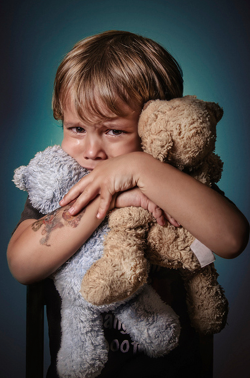Symptoms of Childhood Panic Disorder
Until recently, the medical community considered panic disorders to be a condition affecting only adults; however, views began to change as many patients described their first panic attack as occurring before the age of 18. Childhood panic disorder is now recognized as a separate condition that affects between 0.5%-5% of the pediatric population. It is estimated that more than 3 million people will experience panic disorder over the course of their lifetime.
What Are the Symptoms of Childhood Panic Disorder?
Panic attacks often appear with no warning and can last for a period of minutes or hours. Common symptoms include:
- Intense fearfulness or a sense of doom.
- Racing heartbeat.
- Dizziness or lightheadedness.
- Shortness of breath or a feeling of being smothered.
- Trembling and shaking.
- Fear of death or dying.
- Feelings of unreality or “losing one’s mind.”
Panic attacks may involve only one or a combination of many symptoms, depending on the severity of the attack.
What Causes Panic Attacks?

Don’t let your child suffer from childhood panic disorder any longer!
There is no direct cause for panic disorders, but experts believe that genetics, major stress and changes in the way parts of the brain function may be contributing factors.
What Are the Risk Factors?
There are several behavioral characteristics common in children who develop Childhood Panic Disorder. These characteristics may help identify a child who is at high risk for developing the condition:
- Family history of panic disorder.
- Acute separation anxiety.
- Significant stress such as death of a loved one.
- History of physical or sexual abuse.
- Traumatic events such as a serious accident.
Panic disorders can also occur in individuals without any significant risk factors.
How is Panic Disorder Diagnosed?
Childhood panic disorder is frequently misdiagnosed and may lead to unnecessary and often painful tests. The diagnostic process may involve any of the following:
- A complete physical examination.
- Blood work, specifically to test for thyroid function.
- An EKG or other cardiac study to evaluate heart function.
- An evaluation by a psychiatrist or other mental health professional.
Not everyone who experiences panic attacks has panic disorder. In order to be diagnosed with Childhood Panic disorder, the child must have: Frequent, unexplained panic attacks with at least one attack followed by a period of one month in which there is significant worry about having another panic attack or the consequences of an attack, and changing one’s behavior to avoid situations that may trigger a panic attack.
What Are the Treatment Options?
There are several methods used to treat panic disorders; a physician may choose one or a combination of treatments that may include:
- Psychotherapy to help the child recognize and reduce stress.
- Cognitive or behavioral therapy to help the child identify situations that cause attacks and develop skills to manage anxiety.
- Medical therapy to stop or diminish the severity of the attacks.
- Substance abuse treatment if indicated.
If a child is experiencing panic attacks, seek medical attention quickly. Untreated panic disorders can lead to depression or other serious mental health diseases.





